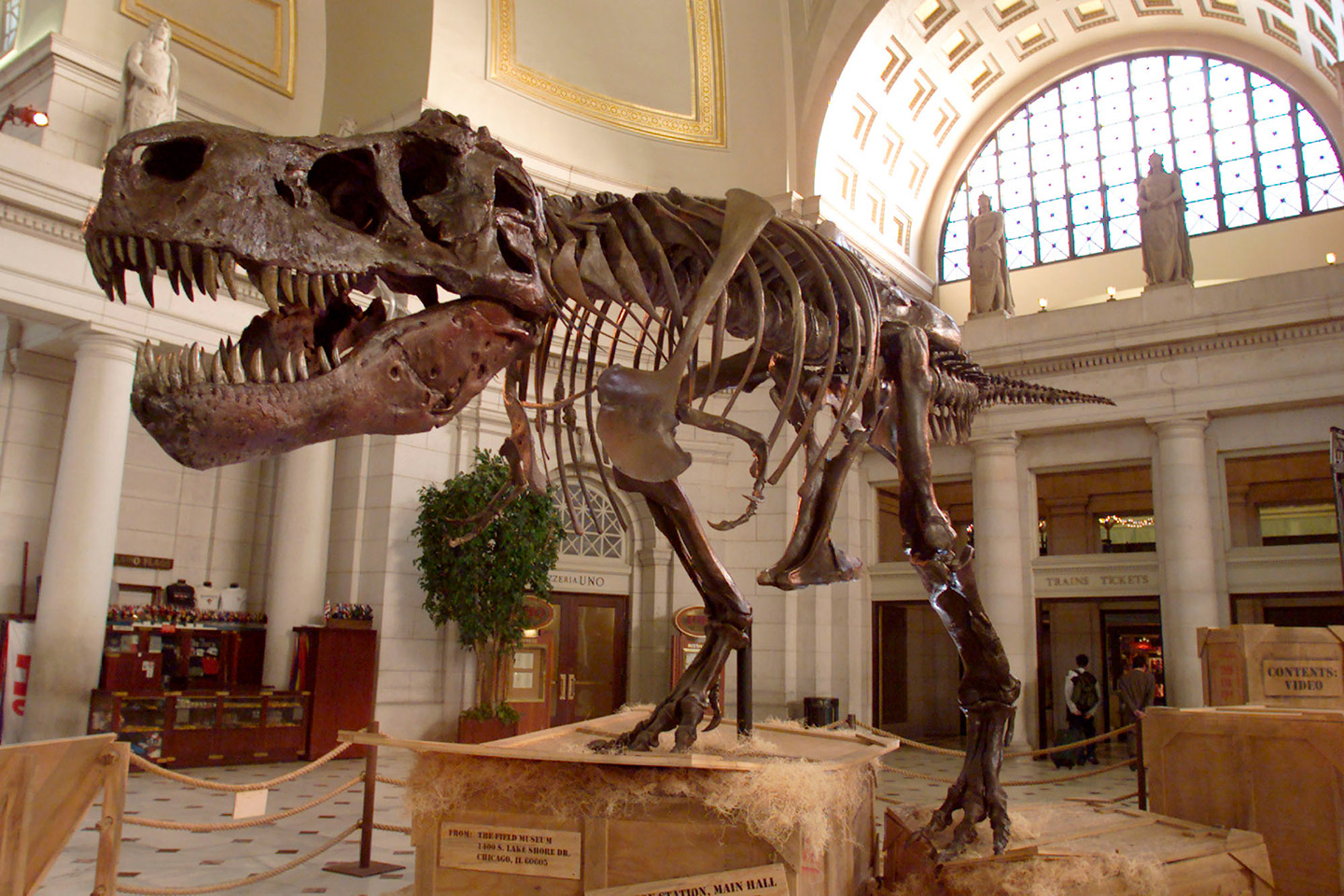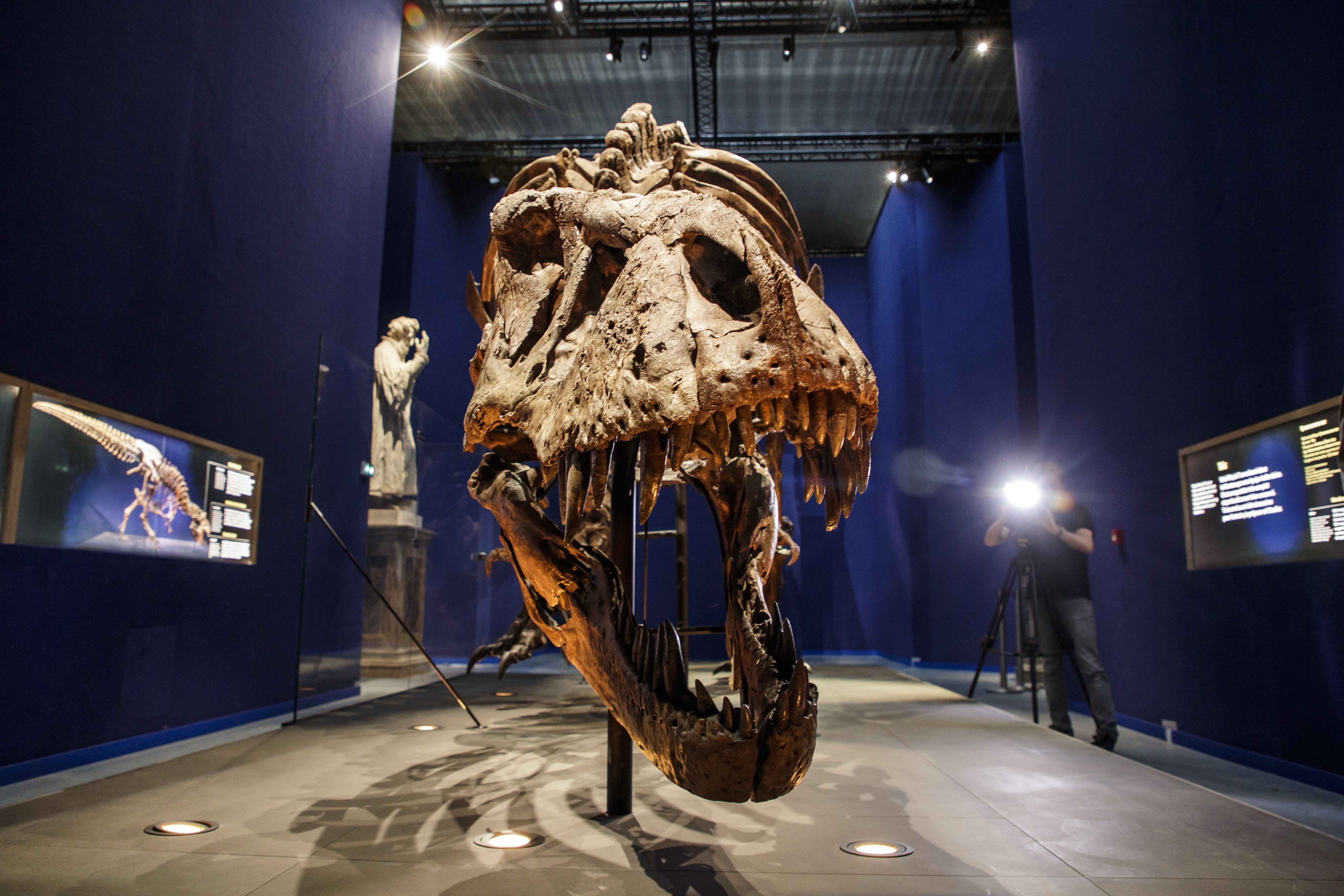


Embryonic fossils are rare, she told Live Science in an email, because "even before they were born, dinosaurs would have been under threat of predation from egg-stealing mammals, and had this baby tyrannosaur hatched, it likely would have had to avoid being eaten by dromaeosaurs ( Velociraptor-like dinosaurs), older tyrannosaurs, crocodilians and possibly even giant pterosaurs." But even without knowing the genus, "finding the remains of extremely young tyrannosaurs is very exciting," said Kat Schroeder, a doctoral student of biology at the University of New Mexico, who wasn't involved with the research but attended the conference presentation. It's a mystery which genus of tyrannosaur these fossils are from, but a few well-known predators from this group include Tyrannosaurus rex, Gorgosaurus and Albertosaurus. (Image credit: Gregory Funston 2020) Embryonic mysteries The newly studied tyrannosaur jawbone (third from top, but magnified at the bottom) is tiny compared with the jaws of a young Gorgosaurus tyrannosaur (top) and a juvenile Daspletosaurus (second from top). (The toe-claw fossil might also be from an embryo because one surface wasn't fully formed, Funston noted.) This style of replacement has recently been found in the first generation of teeth in reptile embryos." "In our case, the replacement tooth is beside the older tooth, and there's no evidence of root disintegration. "In one of the tooth sockets, a replacement tooth is being developed, but in an unusual way: Typically, replacement teeth lie directly below the older tooth, and they eat away at the root to release the older tooth," Funston said. The teeth on the jawbone aren't fully developed, and one tooth in particular offers clues that this fossil might belong to an embryonic tyrannosaur, meaning the tiny tyrannosaur would have died before it had hatched. It's a process that often takes between seven and 10 years for a team of palaeontologists, preparators and conservators.A hypothetical cranial reconstruction based on the newly analyzed jawbone (blue), next to other hypothetical reconstructions from other datasets (left and right), indicates that embryonic tyrannosaurs had heads about the size of a modern mouse. It towers at a height of 3.9 meters (12.8 feet).

Trinity was dynamically mounted in a scientifically accurate and modern pose at a astonishing length of 11.6 meters (38 feet). But here we have original Tyrannosaurus skull bones, all from the same specimen." "In fact, most dinosaurs are found without their skulls. "Dinosaur skulls are very rare they are among the most valuable components of fossil skeletons," said scientific advisor Nils Knötschke, one of the world’s leading fossil preparators. It catapulted dinosaur fossil prices into a realm usually reserved for the most sought-after works of art, the auction house said. rex skeleton, known as ‘Stan’ saw a world-record hammer price of $31.8 million in 2020, purchased by the History Museum Abu Dhabi. In 1997, ‘Sue’ sold at auction for $8.4 million to Chicago’s Field Museum of Natural History. Both sites are known for two of the most important T. The approximate 67-million-year-old skeleton, known as TRX-293 Trinity, consists of nearly 300 bones (50.17% original bone material) from three dinosaurs excavated between 20 from the Hell Creek and Lance Creek formations in Montana and Wyoming, according to the auction house. Koller auction house director Cyril Koller (center) gestures next to the skull of the 'Trinity' during sale of the skeleton of the Tyrannosaurus-Rex (T-Rex) by Koller auction house in Zurich, on April 18, 2023.


 0 kommentar(er)
0 kommentar(er)
